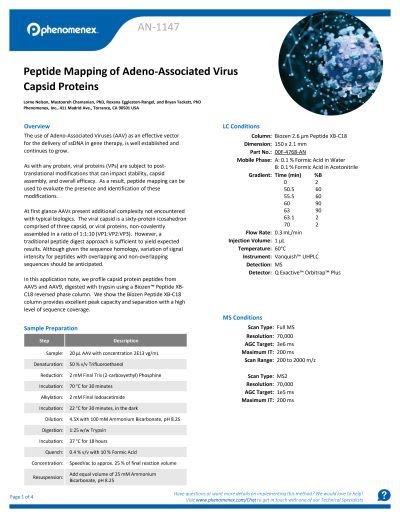The use of Adeno-Associated Viruses (AAV) as an effective vector for the delivery of ssDNA in gene therapy, is well established and continues to grow.
As with any protein, viral proteins (VPs) are subject to posttranslational modifications that can impact stability, capsid assembly, and overall efficacy. As a result, peptide mapping can be used to evaluate the presence and identification of these modifications.

At first glance AAVs present additional complexity not encountered with typical biologics. The viral capsid is a sixty-protein icosahedron comprised of three capsid, or viral proteins, non-covalently assembled in a ratio of 1:1:10 (VP1:VP2:VP3). However, a traditional peptide digest approach is sufficient to yield expected results. Although given the sequence homology, variation of signal intensity for peptides with overlapping and non-overlapping sequences should be anticipated.
In this application note, we profile capsid protein peptides from AAV5 and AAV9, digested with trypsin using a Biozen™ Peptide XBC18 reversed phase column. We show the Biozen Peptide XB-C18 column provides excellent peak capacity and separation with a high level of sequence coverage.





